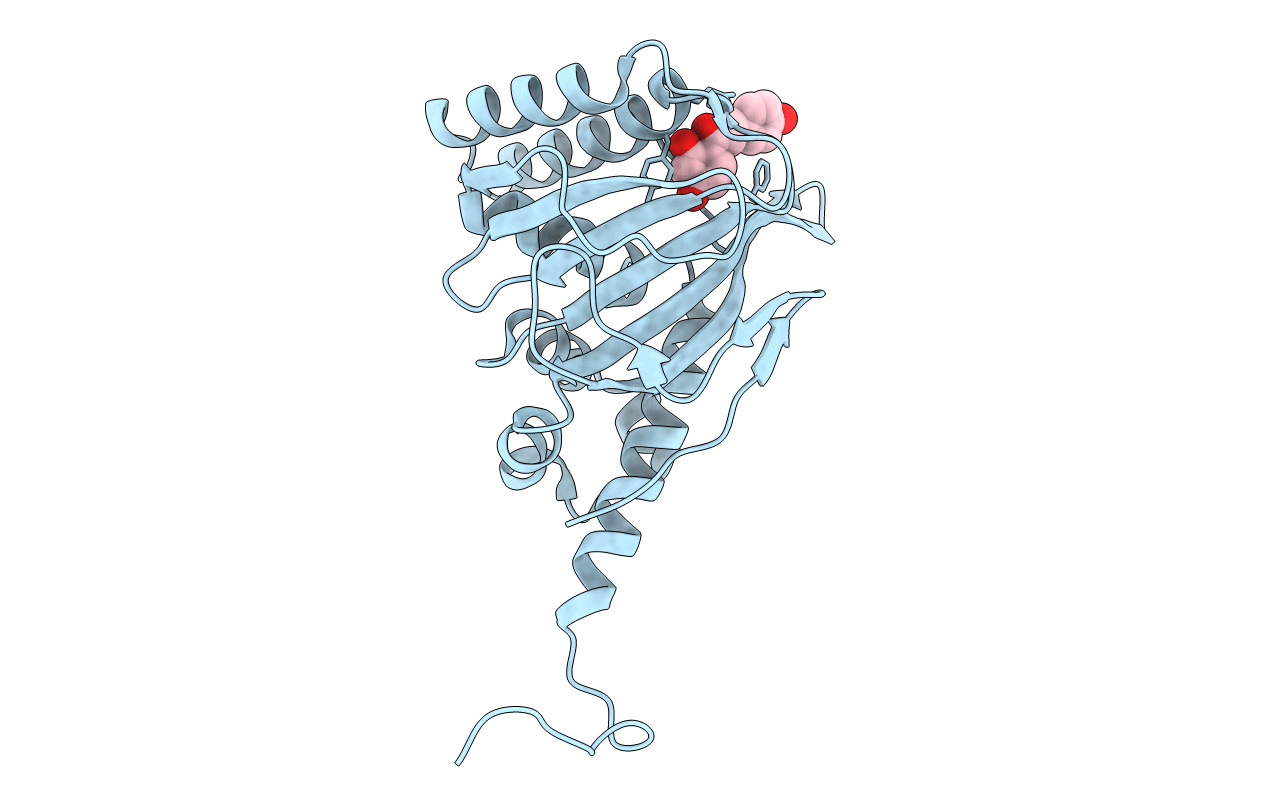
Deposition Date
2017-12-01
Release Date
2018-02-14
Last Version Date
2024-03-27
Entry Detail
PDB ID:
5YX4
Keywords:
Title:
Isoliquiritigenin-complexed Chalcone isomerase (S189A) from the Antarctic vascular plant Deschampsia Antarctica (DaCHI1)
Biological Source:
Source Organism:
Deschampsia antarctica (Taxon ID: 159298)
Host Organism:
Method Details:
Experimental Method:
Resolution:
2.10 Å
R-Value Free:
0.22
R-Value Work:
0.18
R-Value Observed:
0.19
Space Group:
P 32 2 1


